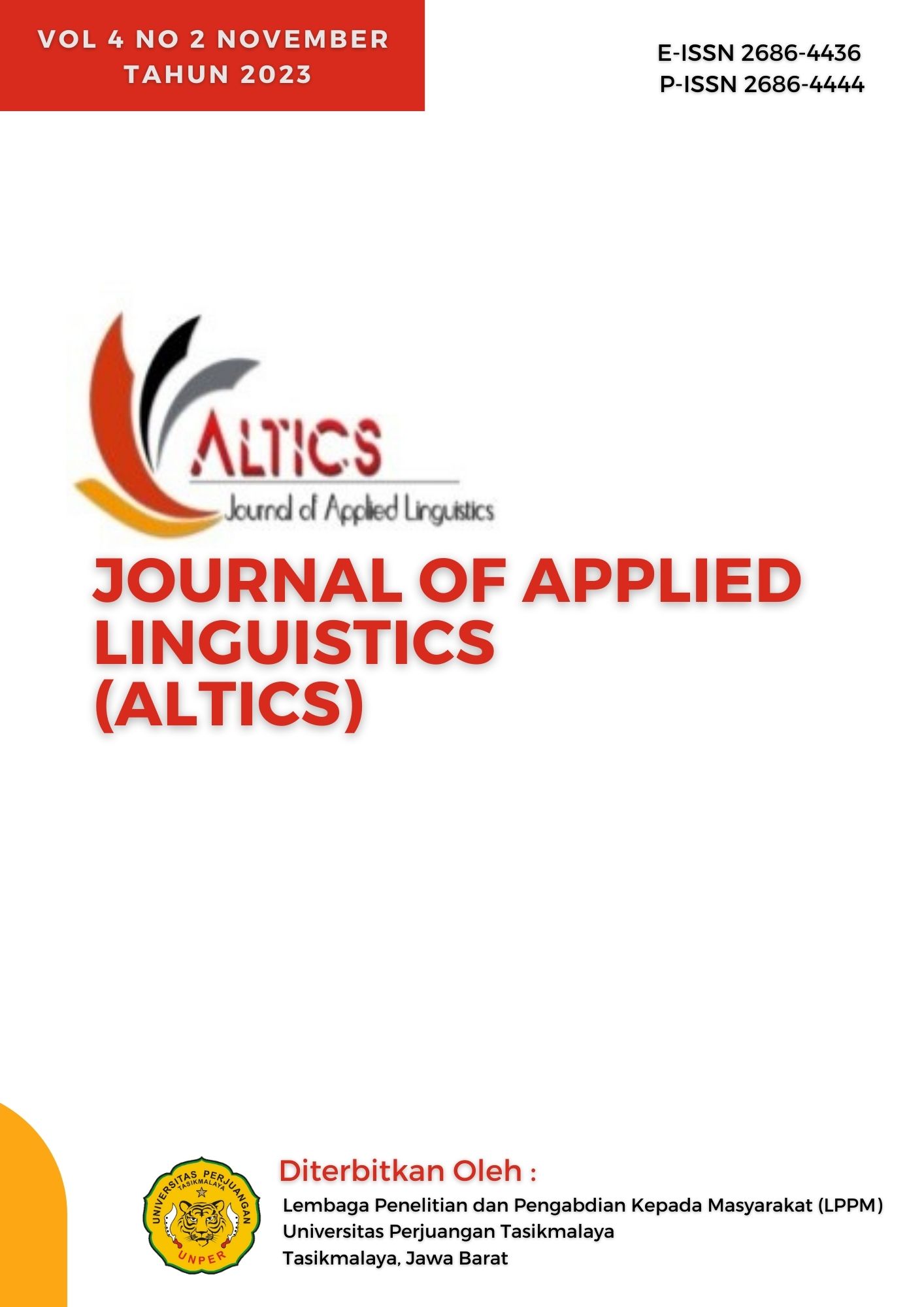A Pragmatic Study: The Illocutionary Acts Analysis Used by An English Instructor in West Java Indonesia
DOI:
https://doi.org/10.36423/altics.v4i2.1598Abstract
The use of illocutionary act in EFL classroom that used by English instructor determines the course of teaching activity. The purposes of the research are to find out illocutionary act classification used by an English instructor in teaching, and the reason behind using each type by connecting with the teaching goals. This research was a case study involving an English instructor in teaching activity of EFL class. The findings of the research showed that the frequency of each classification found as the following: from 540 utterances, directive utterances was used 382 times which represent 71%, representative was used 65 times which represent 12%, expressive 78 times representing 14%, and commissive 15 times representing 3% . Directive speech acts were used mostly by English instructor. The use of directive illocutionary act apparently helped students to improve speaking skill. Besides, expressive act was a second dominant act. Giving many praising to students during teaching students would be motivated to learn and improved their speaking. Moreover, representative act and commissive act was the lowest act during teaching. It was because in speaking class, English instructor provided more opportunity to students to speak in English. Thus, this study gives the implication for teachers and instructor in using the illocutionary acts during teaching activity which it determines the teaching goals and constructing student’s improvement. It was about how the instructor or teacher chose the use of their language in classroom that related with the main purposes of a class.
Downloads
Published
How to Cite
Issue
Section
License
Copyright (c) 2022 Journal of Applied Linguistics (ALTICS)

This work is licensed under a Creative Commons Attribution 4.0 International License.
CC Attribution 4.0











